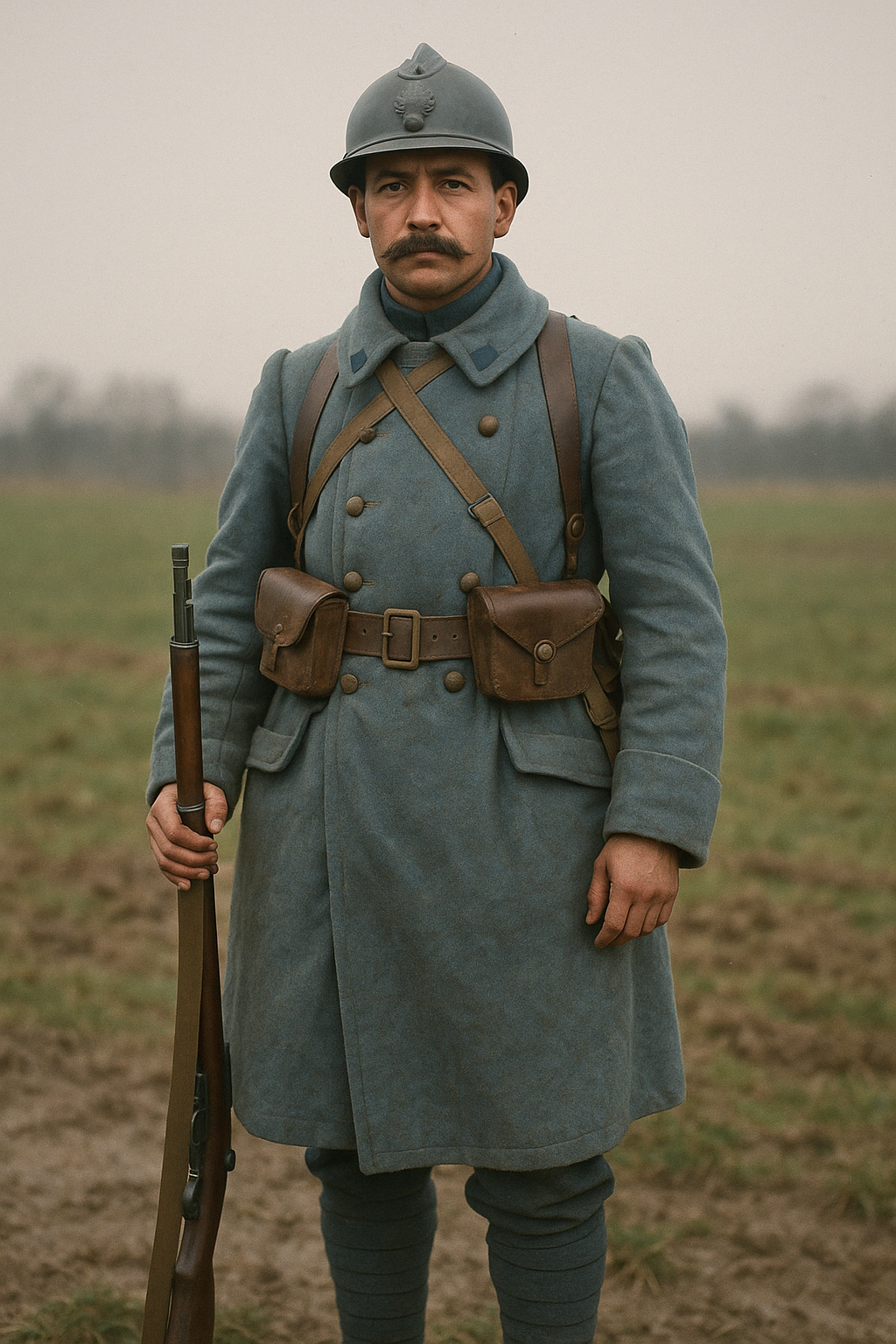
Why Did the French Use Bright Blue Uniforms in WW1? The Uniform Shift That Shaped History
Published on Sep 20, 2025
Introduction: A Color That Costs Lives?
Did you know that in the first few months of World War 1, France suffered over 300,000 casualties—many while wearing bright blue and red uniforms?
The WW1 French uniform, known for its vibrant colors, might seem shockingly unfit for trench warfare. So, why did the French use bright blue uniforms in WW1, and when did they switch to something more practical?
Suppose you're passionate about WW1 history, French military equipment, or the evolution of battlefield strategies. In that case, this deep dive will explain it all—with actionable insights, surprising facts, and how it still influences military designs today.
The Origins of the Bright Blue Uniform (Pre-WW1)
The French Army's Fashion Legacy
Before WW1, the French military prioritized tradition and morale over camouflage. The classic “horizon blue” was seen as a symbol of national pride, not a battlefield liability.
- Pre-1914 Uniform Colors:
- Dark blue coat with red trousers
- Inspired by Napoleonic-era uniforms
- Designed to inspire bravery, not stealth
Symbolism Over Strategy
- Red trousers represented valor and sacrifice
- Bright blue coats stood for the republican spirit and unity
But this came with a deadly cost as warfare modernized.
Why Did the French Use Bright Blue Uniforms in WW1? (And Why It Failed)
1. A Clash of Eras: Old Uniforms vs Modern Warfare
When WW1 erupted in 1914, France was slow to adapt. Their officers believed that morale and visibility would win battles.
However, warfare had evolved:
- Machine guns mowed down soldiers in visible uniforms.
- Aerial reconnaissance exposed troops.
- Trenches and mud made bright fabrics dangerous.
2. Catastrophic French Casualties in WW1
- Over 300,000 French soldiers were killed or wounded by the end of 1914
- Historians agree that the uniform contributed to the high French casualties in WW1
- Soldiers were nicknamed “target practice” by German snipers due to their visibility
When Did the French Army Switch Uniforms in WW1?
Timeline of the Uniform Change
- August 1914: War begins with bright uniforms still in use
- December 1914: Emergency reforms initiated due to public outcry
- Early 1915: Introduction of the “horizon blue” uniform
- Mid-to-late 1915: Majority of French infantry units outfitted with new uniforms
Horizon Blue: A Practical Solution
- Color: A muted, bluish-grey tone that blended better with battlefield terrain
- Fabric: Wool-blended material for warmth and durability
- Accessories: Standardized French WW1 greatcoat, puttees, and Adrian helmet
Why Did the French Use Bright Blue Uniforms in WW1? (H2 REPEAT for SEO)
Let’s break this down to 3 main reasons:
- Tradition & Symbolism: National pride, a hangover from Napoleonic glories.
- Underestimating Modern Warfare: Lack of experience with trench and industrial warfare.
- Bureaucratic Resistance to Change: Delayed military reforms despite early casualties.
Identifying WW1 French Uniforms Today
Collector's Tips: How to Spot an Authentic WW1 French Uniform
- Pre-1915 Uniforms:
- Bright red trousers and a deep blue tunic
- Often have ornate buttons and decorations
- Post-1915 Uniforms:
- Horizon blue tone
- Adrian's helmet with regimental insignia
- French WW1 greatcoat is often included in winter kits
Pitfall to Avoid: Many replicas confuse WW1 and French WW2 uniforms—the latter often feature khaki or darker blue tones. Be careful when buying online.
Actionable Tips for History Buffs and Collectors
For Reenactors:
- Use Horizon Blue for accuracy in 1916+ scenarios
- Pair with the iconic Adrian helmet and greatcoat
- Avoid mixing pre-1915 and post-1915 elements
For Collectors:
- Ask for provenance and dated tags
- Ensure wool texture matches early 20th-century standards
- Confirm button style and regimental stamps
For Educators & Museum Curators:
- Highlight the fatal flaws of bright uniforms
- Show before and after examples to demonstrate adaptation
- Use uniform evolution to explain broader changes in WW1 tactics
Current Trends: Why Military Collectors Still Love French WW1 Uniforms
The popularity of French WW1 military gear has seen a resurgence thanks to:
- WW1 documentaries and centennial exhibitions
- Authenticity-driven reenactment communities
- Online militaria markets and forums
Modern interest isn’t just nostalgic—it’s about learning from design mistakes and understanding the human cost of pride and bureaucracy.
Conclusion: Why Did the French Use Bright Blue Uniforms in WW1 – and What We Can Learn
The decision to dress troops in bright blue uniforms during WW1 was rooted in tradition, pride, and outdated military thinking. While iconic, these uniforms became a symbol of costly tactical missteps.
The eventual switch to horizon blue marked a critical shift—not just in color, but in how France fought wars moving forward.
Whether you're a collector, historian, or just curious, understanding this shift helps us better appreciate the sacrifices made and lessons learned during one of the bloodiest conflicts in history.
